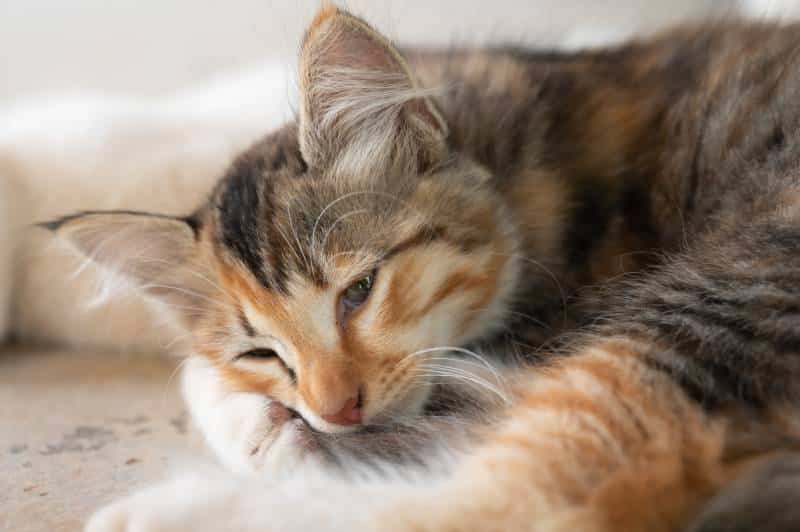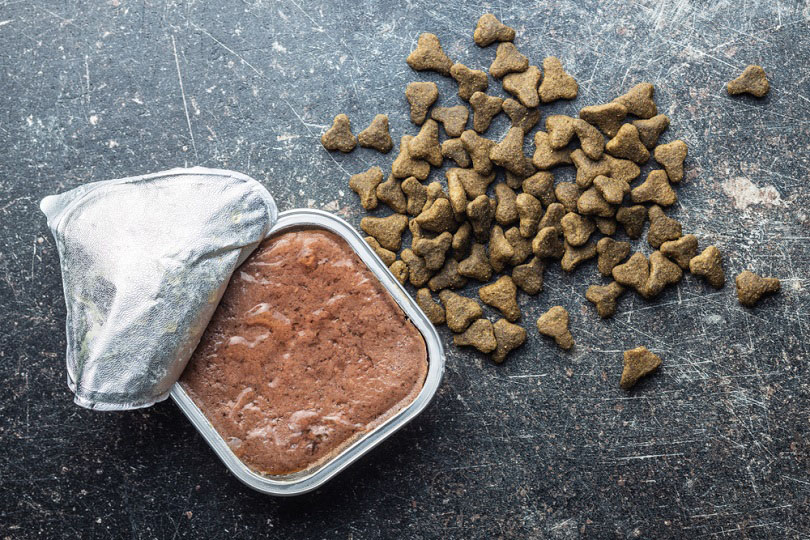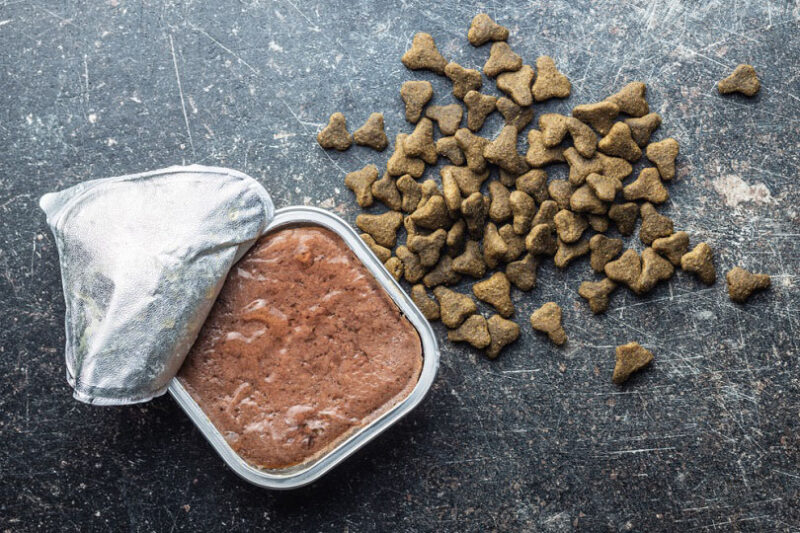Cat food can last a very long time, but what if it’s past its expiration date? Is it safe to feed your cat expired cat food? No, we don’t recommend you feed your cat expired cat food at all.
Feeding your cat food past its expiration date can harm your cat. Read on as we explain the intricacies of pet food in more detail.

Expiration Date vs. Best-Before Date – Is There a Difference?
One of the fundamental aspects of understanding a pet food label is looking at the expiration or expiry date (also known as a “use by” date) or “best before” date. Manufacturers have to provide this information, and if your product lacks it, you should not serve it to your pet.
Though the terms expiry date and best-by date are used interchangeably, they have different meanings.
- “Best Before” Date: If a food is past its best-before date, it isn’t necessarily toxic or dangerous for consumption; however, it will not provide the same nutrition as it normally would.
- Expiry Date: If a food is past its expiry date, it is considered dangerous for consumption and can lead to serious health issues if fed to your cat.
Needless to say, you should never feed your cat food that’s past its expiry date or best-before date. However, expired food poses a much higher health risk for your pet. Therefore, carefully reading your pet food labels is important for your pet’s health and safety.

Shelf Life of Dry and Canned Cat Foods
Cat food may seem like it can last nearly forever, and although it can last for a very long time unopened, that doesn’t mean it can’t go bad. Dry cat food typically has a stable shelf life of somewhere between 12 and 18 months if it’s still sealed in its original packaging and the original packing is untampered. Once opened, it should be used within 4 to 6 weeks.
However, you must remember that some cat food expires faster than others. Preservative-free cat foods may seem like a great all-natural approach to feeding your cat, but you’ll need to keep in mind how fast they expire. Also, formulas that are high in fat are much more likely to go rancid faster than leaner foods.
The Dangers of Expired Cat Food
The biggest risk with expired food is that it can poison your cat since it harbors various pathogens. This can lead to a food poisoning episode.
- Lethargy and weakness
- Fever
- Lack of appetite
- Vomiting
- Diarrhea
- Sunken eyes
- Tacky, dry gums
Because food poisoning can cause vomiting and diarrhea, it can quickly lead to a very dehydrated pet. If you suspect your pet suffers from a food poisoning episode, contact your veterinarian immediately.

How to Tell if Your Cat’s Food is Expired
How can you tell if your cat’s food is expired? It is much easier than you think. The first thing you should check for is a use-by or expiration date. The date is printed on the original packaging and indicates when the food should be used for maximum freshness and nutrition.
However, the date may be a bit tricky to find at first. It may be printed somewhere on the side or bottom of the bag or can. Normally, you should check this date before purchasing. But if you didn’t have the opportunity before buying it, you must inspect the bag and date before feeding it to your loved one.
Also, you should inspect the food thoroughly before feeding it to your cat. Does it smell or look the same as the last time you fed it to them? Are there bugs crawling around in it, or is mold present? You should ask yourself these questions as you’re preparing their dish.
When it comes to open canned cat food, determining whether or not the food is expired is pretty easy. If the food is discolored, has a sour smell, or is off in any other way, go ahead and toss it. It’s just not worth the risk of getting your cat sick.
- NO MESS - The 360° tray on this cat food and water bowl set has a raised design to catch and...
- WHISKER FRIENDLY - Shallow and wide metal containers with flat bottoms ensure your kitty can enjoy...
- CHEW-SAFE MATERIALS - Kittens and cats love chewing on silicone and soft rubber - but it's a choking...
Feeding your cat a high-quality diet is important for keeping them healthy and happy. But it goes beyond the food you choose; the dishes they use also matter. The Hepper NomNom Cat Bowl is our favorite for its unique, five-star design that protects from whisker fatigue and promotes good posture which also aids in better digestion. As an added bonus, it’s beautifully crafted and offers a modern take on the traditional cat bowl that fits seamlessly with all home stylings. Learn more about the NomNom by clicking here.
At Catster, we’ve admired Hepper for many years and decided to take a controlling ownership interest so that we could benefit from the outstanding designs of this cool cat company!
Storing Dry and Canned Cat Food
To maximize the freshness of your cat’s food, proper storage is critical. You’ll need to protect it from the elements and unwanted guests such as ants or roaches. We recommend keeping your cat’s unopened food sealed and tucked away in a cool dry place until it’s ready to use. Places such as a kitchen cabinet, pantry, or utility closet work great because there are minimal fluctuations in temperature and humidity.
Once opened, you need to take some extra precautions. With dry food, it’s best to reseal the food in its original packaging. If that isn’t possible, transfer it to another container if the original packaging isn’t resealable. The Gamma2 Vittles Vault is a perfect option. It has an easy screw-on lid, a space-efficient design, BPA-free food-grade plastic form, and an airtight seal. These factors keep air, moisture, and bugs from invading your cat’s food.
When adding food to a container for storage, ensure you note the date, what food you’re placing in the container, and the original use-by, best-by, or expiry date from the packaging before discarding the packaging. The container should be thoroughly cleaned and dried before being refilled to remove fat and oil residue. Furthermore, once opened, dry food should be used in 4 to 6 weeks.
Storing your cat’s wet food is just as simple. All you need to do is store the unused portion in a food-safe storage container and place it in your fridge. Now, if you don’t want to use your nice Tupperware containers for cat food, you can always pick up a cheap container such as the Frisco Wet Food Container. It’s affordable and gets the job done.
 Conclusion
Conclusion
Your cat deserves to eat the best food available to them to promote a healthy, active lifestyle. Expired food doesn’t provide the nutrition your cats need and is a major health risk for your pet, as it can lead to food poisoning. Even if the expired food is unopened, it’s not safe to serve to your cat.
If you encounter expired food, throw it away and buy new food. If you see expired pet food at the store, be sure to inform a manager so they can remove the product from the shelves.
Feeding your feline non-expired food is more than just recommended—it’s essential.
Related Reads:
Featured Image: Jiri Hera, Shutterstock




 Conclusion
Conclusion






